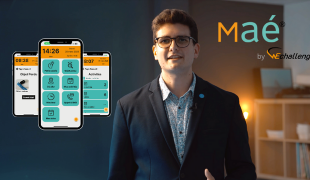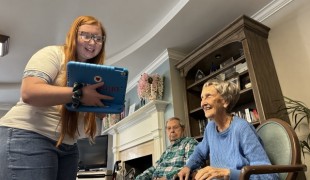Browse solutions by specific condition
Browse posts by specific condition
1892 solutions
-
-
23
-
0
-
236

Students develop AI-based system to support senior care, inspired by a team member’s experience as a long-term patient
-
-
-
26
-
0
-
255

Student creates memory-support app to help people with Alzheimer’s stay autonomous
-
-
-
33
-
0
-
347

Diabetes patient creates Nido, a device to simplify daily insulin injections
-
-
-
45
-
0
-
447

CareYaya - An affordable home care solution inspired by a family’s own needs
-
-
-
46
-
0
-
382

13 year-old Kevin Tang creates home fall-detection system to protect his grandmother
-
-
-
110
-
0
-
1503

Telos Care helps patients and informal caregivers organize, consolidate and securely share health data for better care.
-
-
-
165
-
0
-
2225

A personalized AV fistula protection for dialysis patients.
CAREGIVING
Kidney Failure
Body-Worn solutions (Clothing, accessories, shoes, sensors...)
Changes in urine frequency or volume
Decreased urine output
Fatigue
Flank pain (pain in the sides of the back)
Increased thirst
Kidney failure
Swelling in the lower extremities (edema)
Urinary urgency at night (nocturia)
To improve Treatment/Therapy
Preventing (Vaccination, Protection, Falls, Research/Mapping)
Nephrology
Slovenia
-
-
-
170
-
0
-
2034

Mother develops low-stimulation app to support postpartum recovery and mental health of breastpumping mothers
-
-
-
277
-
0
-
3543

Adaptive Tights for Urinary Catheter Users
(SELF)-CONTROL: URINARY CONTINENCE: Maintaining urinary continence
(SELF)-CARE: USING THE TOILET: Using the toilet independently
Vesical Fistula
Body-Worn solutions (Clothing, accessories, shoes, sensors...)
Urgency to urinate
Urinary incontinence
Urine leakage with coughing or sneezing (stress incontinence)
Promoting self-management
Gynecology and Obstetrics
Urology
Portugal
-
 en
en